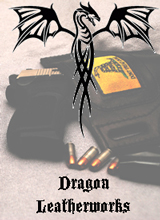Neat story from C-90
The marine-dwelling sea hare converts pigment from its food into a chemical weapon….Some animals create noxious chemicals by building them in-house from bits of protein, others order toxins to-go, such as monarch caterpillars that eat poisonous milkweed plants, becoming poisonous to predatory birds in the process. But performing slight alterations to turn a benign algae pigment into a toxic compound is a new level of chemical ingenuity, says marine chemical ecologist James McClintock of the University of Alabama at Birmingham….The team also showed how the sea hares make APV. The chemical precursor to APV is a mild-mannered photosynthesis pigment called phycoerythrobilin that’s found in red algae and a few other organisms. Sea hares graze on the algae, loading up on phycoerythrobilin. Just two small chemical tweaks — snipping off a protein and adding a chemical decoration known as a methyl group — by the sea hare produces the offensive APV, says Kamio. The sea hare’s ink gland serves as its chemistry lab, Kamio and colleagues report in the May Chemistry & Biodiversity.
This is really neat, and reminds me of their better-known cousins the nudibranchs who steal their weapons from others:
Nudibranchs that feed on hydrozoids can store the hydrozoids’ nematocysts (stinging cells) in the dorsal body wall, the cerata.[9] These stolen nematocysts, called kleptocnidae, wander through the alimentary tract without harming the nudibranch. Once further into the organ, the cells are assimilated by intestinal protuberances and brought to specific placements on the creature’s hind body. Nudibranchs can protect themselves from the hydrozoids and their nematocysts; the specific mechanism is yet unknown, but special cells with large vacuoles probably play an important role.
When you look at a nematocyst under a microscope you quickly see it is actually a mechanical weapon made from cellular structure, so how the Nudibranch manages to essentially ingest a loaded mousetrap without triggering the kill-bar is really an amazing feat of nature.



Nematocysts are awesome! Our middle-school science teacher took a small section of sea anemone tentacle, projected the microscope image on the over-head, and added vinegar. BOOM!
For those that haven’t seen them in action, they function like tiny poisoned harpoons. When triggered, they shoot and latch into the “victim”, injecting their poison. For the local sea anemones, it’s a mild numbing agent; it feels like Scotch tape unless you touch them a lot – then it feels like Scotch tape with novocaine – but jellyfish nematocysts work the same way, and they can get real nasty!